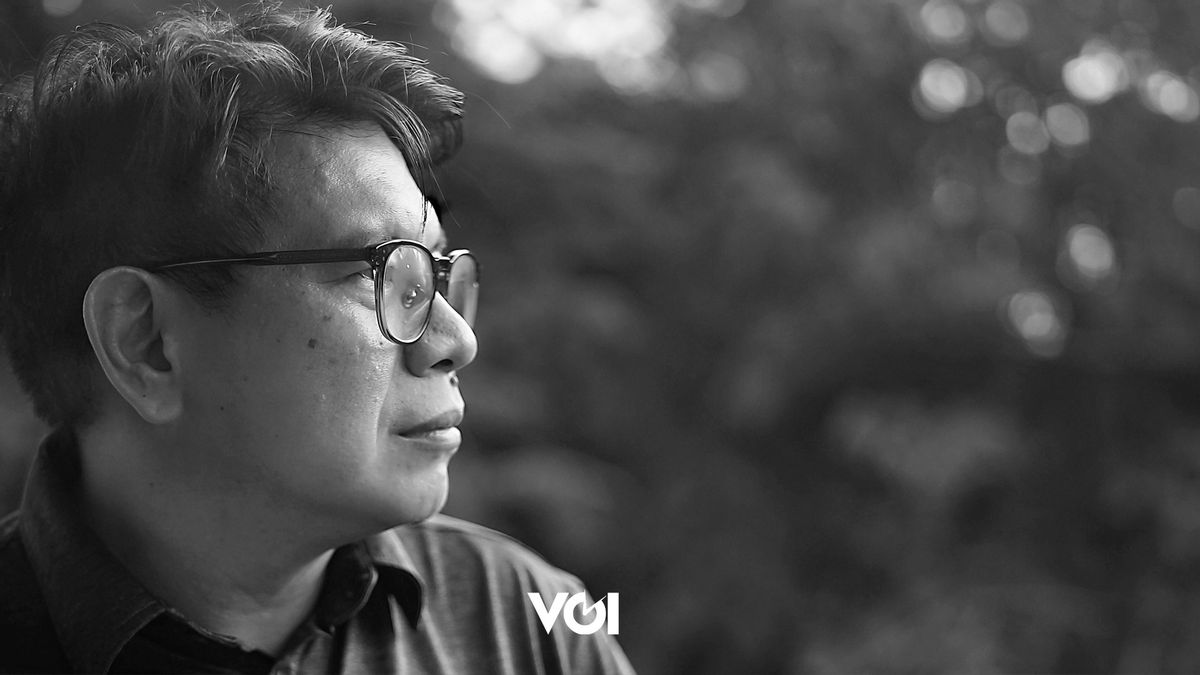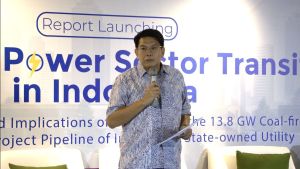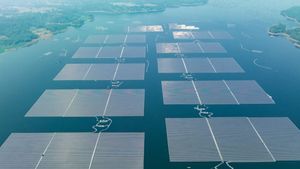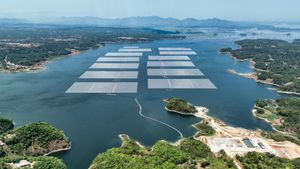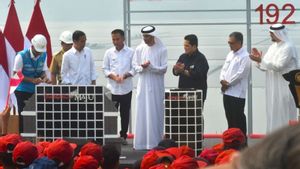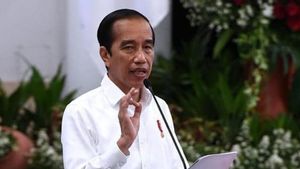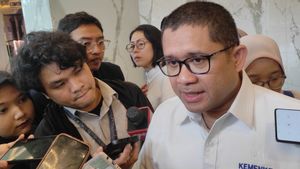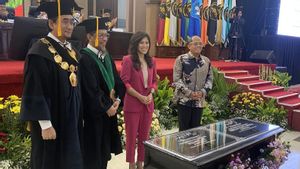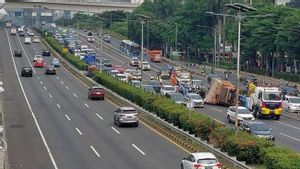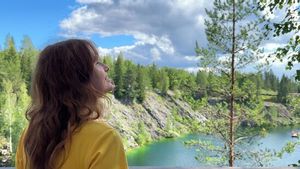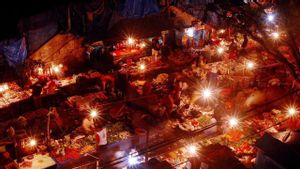Indonesia has enormous solar energy potential. According to data from the Ministry of Energy and Mineral Resources, Indonesia's solar energy potential reaches 3,300 GW. Currently only 200 MW has been utilized. For this reason, the General Chair of the Indonesian Solar Energy Association (AESI), Fabby Tumiwa, welcomed the inauguration of the Floating Hydroelectric Power Plant at Cirata Reservoir with a capacity of 145 MW by President Jokowi on Thursday, November 9. Even though there is still a long distance between potential and utilization, this is an effort that must be appreciated. There are several obstacles that prevent the use of new and renewable energy from being optimal.
***
The Ministry of Energy and Mineral Resources has published a national energy policy roadmap. The target is net zero emissions (Net Zero Emissions / NZE) by 2060 or sooner. To achieve this target, the use of EBT is a necessity. Therefore, the government continues to strive for a transition from the use of fossil energy to NRE. Because Indonesia has very large NRE sources, namely 3,687 GW, but they are managed optimally. Of that amount, solar energy occupies the highest position with 3,300 GW, hydro 95 GW, bioenergy 57 GW, wind 155 GW, geothermal 23 GW, marine 63 GW. Apart from that, there is potential for uranium of 89,483 tons and Thorium of 143,234 tons.
So why hasn't this huge energy potential been managed optimally, especially for solar energy which has the greatest potential among other energies? “At first the technology was still expensive, but lately it has become cheaper and more affordable. The banking sector and financial institutions still do not provide full support, unlike other sectors," he said.
There are still those who are worried about solar energy because it is intermittent. However, there is no need to worry about this situation because Indonesia has a tropical climate and only has two seasons. “Throughout the year, the intensity of solar radiation is there. What is different is that the energy obtained in KWH is lower during the rainy season. Solar radiation in Indonesia on average ranges from 4.2 KWH per m2 to 5.5 KWH per m2. What about the four season countries, they have it worse than us. "That's all they don't have a problem with," explained Fabby Tumiwa.
Another selling point of solar energy is its adaptive nature. “PLTS can be installed anywhere as long as it is exposed to direct sunlight. This can be installed on a roof, on the ground, on water (floating), on agricultural land, even on toll roads," he said.
Fabby Tumiwa, who is also the Executive Director of the Institute for Essential Services Reform (IESR), hopes that the use of solar energy will be even greater. “The Cirata Floating PLTS is the largest in Southeast Asia with a capacity of 145 MW AC. It will even be expanded, it could be twice the current size," he told Edy Suherli and Irfan Medianto from VOI who met him at the Tebet Ecopark, South Jakarta, not long ago. Here's the full quote."

AESI Chairman Fabby Tumiwa said Indonesia has enormous solar power potential. (Photo Irfan Medianto, DI Raga Granada VOI)
The use of new and renewable energy (EBT) has been an issue for several years. To what extent has solar power been optimized?
In our country, there are still very few who use solar energy. We look at data from the Ministry of Energy and Mineral Resources, the total installed capacity of solar power plants in Indonesia until the middle of this year is only around 200 MW. Compare this with the total renewable energy generating capacity in Indonesia which has reached 14,000 MW. The PLTS (Solar Power Plant) is only 200 MW, very small compared to all the renewable energy plants already operating in Indonesia.
How much solar energy potential does Indonesia have?
If we take data from the Ministry of Energy and Mineral Resources, our solar energy potential reaches 3,300 GW. This is slightly lower than the data we have. We conducted a study before the Ministry of Energy and Mineral Resources published our solar energy potential. We found the potential for PLTS based on the availability of suitable land without having to build or evict, the potential reaches 3,400 to 20,000 GW. Meanwhile, only around 200 MW has been installed recently, which is far from the potential that exists with what we already use.
What are the obstacles, how come there is still little solar energy being utilized?
Solar energy has actually been developed in Indonesia for quite a long time. Since the 70s there has been research on this matter. Solar power generation is not yet very commercial but is starting to develop. Initially used for satellites in space, then for non-space purposes. Indonesia itself has been using solar power earlier, starting in the 80s. We use it to provide electricity in remote villages. One of the famous models at that time was Mekarsari Village. However, using solar energy is still relatively expensive. Our energy policy is slowly replacing the use of fossil energy with new and renewable energy, such as hydropower and geothermal energy.
In the late 1990s and early 2000s, we began to develop the coal industry in line with the increase in coal mining after reform. Regions granted coal mining permits, and coal production increased at lower prices. So, one of the reasons why we switch to using coal is because it is considered cheaper, even though it is actually not completely cheap. Before 2010, PLTS technology was still expensive, but after that the price of PLTS fell. The government and PLN have used solar power for remote areas. Only in 2015 did large-scale PLTS appear. After the issuance of Minister of Energy and Mineral Resources Regulation number 49 of 2018 which allows the installation of PLTS on the roofs of PLN consumers' houses, conditions have become more conducive. The rooftop solar PV business is starting to develop, although it is still on a small scale.
There are still those who think that PLTS is not reliable, because electricity is only available when there is sunlight. How do you explain this to the public?
Indeed, most people are still worried about its intermittent nature, because they are afraid that this will affect the quality of the electricity supply and impact the costs of maintaining security and stability of supply. Therefore, there is hesitation to integrate PLTS on a larger scale into electric power sources.
Are existing regulations sufficient to support the use of solar power?
Regulations, I think, are sufficient, especially after the implementation of the net metering system. Rooftop PLTS users can donate electricity generated during the day to PLN. Customers can get around 65 percent compensation with this system. However, this regulation was revised because PLN experienced an over-supply of electricity. This rule makes rooftop solar PV less attractive. It is hoped that once PLN's overcapacity returns to normal, the regulations will again support the use of net metering.

It turns out that there are obstacles in utilizing solar energy, AESI General Chairman Fabby Tumiwa revealed this. (Photo Irfan Medianto, DI Raga Granada VOI)
The government has just inaugurated a carbon exchange, what are the implications for the use of solar power?
We will still see further developments after the carbon exchange is implemented. What is clear is that using PLTS can help reduce the greenhouse effect which has been a concern for so long. In Australia, companies that use PLTS receive government support, their carbon credits are paid by the government. For those who use green electricity, there is compensation. It's not like that yet with us. In the future, we hope that this will follow so that we can encourage the public to use EBT, including solar energy.
In Indonesia, there is a summer and a rainy season. During the rainy season, how do PLTS users deal with the situation?
Nothing to worry about. Throughout the year, the intensity of solar radiation exists. What is different is that the energy obtained in KWH is lower during the rainy season. Solar radiation in Indonesia on average ranges from 4.2 KWH per m2 to 5.5 KWH per m2. What about the four season countries, they have it worse than us. That's all they don't have a problem with.
Do financial institutions support companies or individuals who want to build PLTS?
Support is still very minimal. There are several financial and banking institutions that have joined AESI, they have provided loans to companies or individuals who want to build PLTS. But not many people provide this. There are also those who have provided loans, but the interest rates are still equivalent to credit card interest. This is still burdensome. We hope that financial institutions can provide attractive interest and a rather long tenor, if possible more than 7 years.
In simple terms, what is the estimated calculation for those who want to install PLTS on the roof of their house?
Using PLTS, we can save costs when using electricity at home. Those who install rooftop PLTS can save 15 to 20 percent. This comes from savings on the electricity costs that we pay every month, which can be used to pay off the rooftop solar equipment that we buy through bank credit, for example. After the installment period is over, we will enjoy savings on electricity payments, because some of it has been fulfilled by rooftop PLTS, so we don't pay for all the electricity, some of it is from existing rooftop PLTS.
How long does it take to use the equipment on a rooftop PLTS?
So far, solar modules are guaranteed by the manufacturer for 15 to 20 years, without damage. These solar panels do experience a degradation rate, decreasing from year to year, like equipment in general. However, as long as it is not damaged, it can still be used until it is damaged, which can be up to 30 years or more.
But there's still profit from installing solar PV on the roof, right?
In terms of business, that's great. Only after ten years, the electrical absorption capacity of sunlight will decrease by around 10 percent.
SEE ALSO:
Is there a program from the association to educate people to want to use solar power?
If we are in an association, of course the first thing is for members first. Most of our members are developers and also MSMEs. The association and members often hold events to provide education to the public. There are also those who already have websites such as www.solarhub.id which can help someone calculate if they want to install a rooftop PLTS. Anyway, don't hesitate to ask, now there are many people who can provide help.
The development of solar module technology is increasingly advanced, the latest is what is the current efficiency of solar modules?
For PLTS, development is increasingly developing. Increased efficiency is how much sunlight can be converted into electricity. Ten years ago, the average efficiency was between 12 and 15 percent. Now, the figure has risen to 20 percent. The cost of making PLTS is also getting cheaper and more affordable. The size is thinner and the service life is also longer. Unused solar panels can also be recycled. This needs to be strengthened with government regulations to provide benefits to society.
The government is building a floating PLTS in Cirata, apart from there, where else is worth noting?
Basically, PLTS can be installed anywhere as long as it is exposed to direct sunlight. It can be installed on roofs, land, water, agricultural land, even on toll roads. Cirata is the largest in Southeast Asia with a capacity of 145 MW AC. It will even be expanded, I don't know the size yet. But the maximum that can be used is more than five percent, so it could be double what is currently available. On a smaller scale, there are also in Kupang (NTT), Lombok (NTB), Likupang (Sulut).
In the future, the use of solar energy is very promising, isn't that right?
Yes, because we have quite large and untapped solar power potential. In Europe and America, PLTS has been developed on agricultural land, called agrivoltage. We haven't yet, hopefully someone can start and the regulations will also support it. In some cases, the productivity of land covered by PLTS has increased by 20 to 30 percent. Because PLTS functions as a protector, the evaporation is lower. So it is still very possible to be developed in Indonesia. This PLTS technology is very adaptive. It needs support from all parties, starting from the government, banking, and also community support.
The Institute for Essential Services Reform (IESR) once calculated that if all houses and buildings in Indonesia were installed with rooftop PLTS, it could produce 500 to 655 GW of electrical energy. Not to mention if there is a floating PLTS or on other land. This is a large number. In the future, PLTS and other renewable energy will be very helpful in reducing emissions and the greenhouse effect.
Not Just Fitness, This Is The Importance Of Sport For Fabby Tumiwa

AESI Chairman Fabby Tumiwa makes exercise a basic need, something is missing if you don't exercise. (Photo Irfan Medianto, DI Raga Granada VOI)
Even though he is busy with various activities, Fabby Tumiwa, who currently serves as General Chair of the Indonesian Solar Energy Association (AESI), will not leave sports activities. For him, sport is like a staple food. Something was missing when he couldn't exercise. “For me, exercise is not only to find physical fitness, but also to relieve stress due to piling up work. After exercising, I feel relaxed," he said.
In the midst of his busy schedule, how does he find time to exercise? "I'm busy with various organizations, but I don't do much personally. The first thing I take care of is family and children. In the midst of my busy life, I have to make time to exercise," he said.
Because of the job and position he currently holds, Fabby travels a lot to various cities in Indonesia and even abroad. “I also travel a lot for work. There are also trips with family," continued the Electrical Engineering graduate from Satya Wacana Christian University, Salatiga, Central Java.
Another hobby and habit he does regularly is reading. “I really like reading. Almost everything I read, starting from fiction and non-fiction books, as well as newspapers both published domestically and internationally," continued the man who has a large collection of books.
In connection with work, Fabby reads a lot of reference books and journals. “Usually I need references for research. There are many books and journals that I have to read. Sometimes I read physical books, but sometimes also e-books on the iPad or audio books. Not only at the office, sometimes on the way to the office I also use the time to read a book," he continued.
Excercising Every Day

Apart from exercising, Fabby Tumiwa also likes reading books, both in conventional format or in ebooks and audio books. (Photo Irfan Medianto, DI Raga Granada VOI)
Every day, Fabby Tumiwanever stops exercising. “I exercise regularly, I exercise almost every day. I like running. So, every morning I definitely go for a run," he said.
Back when the COVID-19 pandemic hit, he had more time to exercise. “During the pandemic, I was able to run longer. One run can be up to 10 km to 12 km. Now it can only be about 5 km. If it's the weekend, there's enough time. So, the run can be up to 15 km to 20 km," said the man who is also the founder of the Institute for Essential Services Reform (IESR).
Now, Fabby is preparing to take part in a marathon. “I'm preparing to take part in the half marathon first. If I'm used to it, then take part in the full marathon," he said. “Bali Marathon is okay, then other cities. If I have the luck, I can take part in major marathons in Boston, Chicago, New York, Berlin, London and Tokyo," he added.
Apart from running, his other sports include cycling and badminton. "Apart from running, as a distraction I exercise by cycling, either indoors on a stationary bike or on the road. Sometimes I play badminton with colleagues and friends," continued Fabby, who is also a member of the High Level Consultative Group (HLCG) of the Accelerated Energy Transition.
There are many benefits he feels from exercising regularly. “For me, sport is not only for fitness but also for stress relief. Hormones that can reduce stress are released by exercising," he continued.
Because it has become a habit, something is lost when you don't exercise. “For me, I'm in a bad mood if I don't exercise. My energy is less than optimal when I can't exercise," he said.
Time For Family

Fabby Tumiwa is someone who can do several activities at the same time. While running, he can listen to podcasts, which are now made by many content creators. “So, while running, you can listen to audio books or podcasts. While exercising, I also get new information," continued Fabby, who studied Extractive Industry Governance at Central European University.
When it comes to food, he is someone who doesn't have many taboos. However, because he was no longer young, he had the awareness to start reducing his intake of certain foods. "At this age, I have started to reduce my intake of foods containing fat, salt and cholesterol to avoid degenerative diseases," said the man who studied Energy and Climate Policy at Tufts University's Fletcher School.
“So, when it comes to food, I don't have any restrictions. There is just an effort to reduce it. I rarely eat fried food. I also reduce sweet foods and drinks, as well as those that contain high fat," he added, who also regulates his calorie intake so that his body weight is not excessive.
Even though he is busy with office matters and sports activities, Fabby Tumiwa still has time for his family. “There is always time for family, children, wife and parents. I usually spend time on weekends for my family, whether my little family or extended family," he concluded.
"There is nothing to worry about. Throughout the year the intensity of solar radiation is there. What is different is that the energy obtained in KWH is indeed lower during the rainy season. The average solar radiation in Indonesia ranges from 4.2 KWH per m2 to 5.5 KWH per m2. What about 4 season countries, they are worse than us. They don't have a problem with that,"
The English, Chinese, Japanese, Arabic, and French versions are automatically generated by the AI. So there may still be inaccuracies in translating, please always see Indonesian as our main language. (system supported by DigitalSiber.id)
